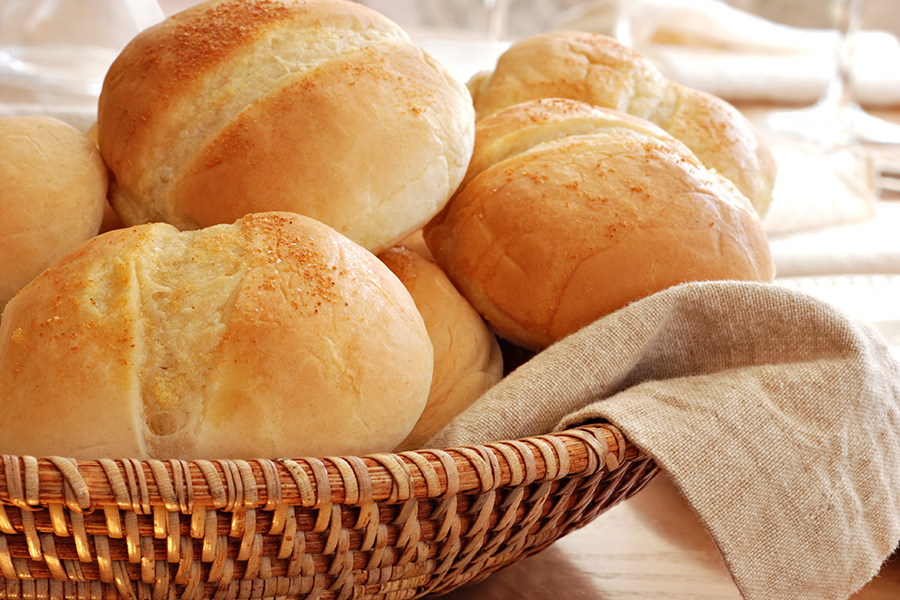Behind the aroma of fresh baked bread
Wednesday, November 17, 2021
By the time November rolls around, Thanksgiving and all things family are predominant thoughts on our minds. We remember family gatherings, especially the resulting struggles and comedy. A large part of family memories is the food. At my family gatherings, we have certain people who make the same food dish year after year. If that person doesn’t come, that food dish isn’t made, and the get-together just isn’t the same.
One of the staple foods made in my family holiday get-togethers are my mom’s homemade dinner rolls. The aroma of those warm rolls seems to out-compete the turkey and sweet potatoes as it fills my chest with warmth and feelings of complete peace in my world. I love the smell of freshly bake bread. (Is that a candle?)
Recently, researchers at the University College Dublin in Ireland have investigated what composes the aroma of bread and why we like it. It was found that a loaf of bread contains over 540 distinct volatile compounds, with less than 20 contributing to the aroma of bread and 12 being key components. The 12 key aromas are:
- Milk, butter, diacetyl
- Green apple, grapefruit, lemon, vinegar
- Fresh cheese, buttermilk, plain yogurt, aged cheese
- Baked onion, dark beer, baked chestnut, cheese gratin
- Fig, raisin, stewed fruit
- French roast coffee beans, vanilla bean, aged balsamic vinegar
- Malty, popped grains, nutty
- Butterscotch, toffee, chocolate, molasses
- Raw starch, raw green beans, pea shoots, straw, dry yeast
- Cooked spaghetti, steamed potatoes, cooked oatmeal, yeasty champagne
- Cooked wholegrains, cooked dried beans, green olive, flint, slate, mineral
- Beer, grapefruit pith, turned red wine, sherry
Additionally, the Irish researchers found the smell of bread triggers a “Pavlovian response” – an instinctive, behavioral response to a neutral stimulus. We associate the aroma of baked bread with memories of family, happiness, safety and feeling full by eating too much. Now, when we smell the aroma of baked bread, we automatically have an overall good feeling. This is why during the recent pandemic, we all decided to learn how to bake bread, causing flour and yeast shortages. We needed comfort.
On Nov. 6, 1987, President Ronald Regan declared November to be National Family Bread Baking month. He said,
“Bread, the staff of life, both gives and symbolizes sustenance. Until recent decades the American people baked their bread at home, and today many
families enjoy this tradition, not simply for its wholesome nutrition but also for its rich association with the well-being and security of family life. Baking bread at home provides a nutritious and delicious food and uses many products of American agriculture … ”
Remember, if we do not keep baking bread at home and creating those “Pavlovian aromas,” the smell of baked bread will not elicit the same response to our children as it did for us and create a chain reaction of consequences. If our children do not grow up with positive feelings regarding bread, the desire to have bread as a part of their diet will not be as strong, which decreases the need for flour milled and wheat acres grown … all large contributors to the Oklahoma and American economy.
Don’t be afraid. Bread has been made for thousands of years, being a huge caloric supply to generations across the world. What I’ve learned is that even if we think our bread isn’t “pretty” and doesn’t look like the photo on Facebook, Pinterest or Instagram, it still tastes wonderful and is quickly devoured. So, good luck baking and supporting National Family Bread Baking Month … even if you need to go gluten-free.
For more information, contact Renee Albers- Nelson, FAPC milling and baking specialist, at renee.albers_nelson@okstate.edu.

